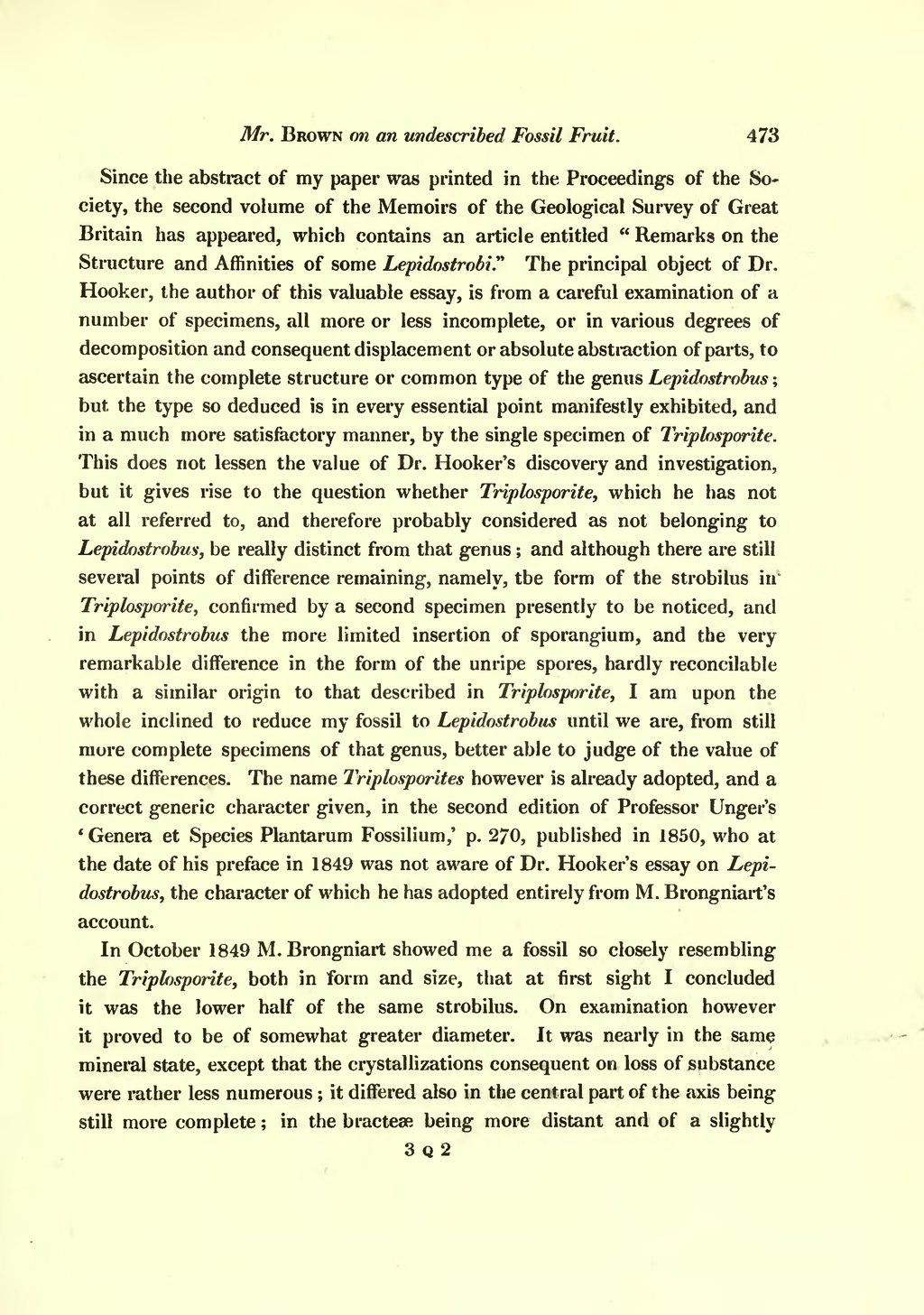Since the abstract of my paper was printed in the Proceedings of the Society, the second volume of the Memoirs of the Geological Survey of Great Britain has appeared, which contains an article entitled Remarks on the Structure and Affinities of some Lepidostrobi. The principal object of Dr. Hooker, the author of this valuable essay, is from a careful examination of a number of specimens, all more or less incomplete, or in various degrees of decomposition and consequent displacement or absolute abstraction of parts, to ascertain the complete structure or common type of the genus Lepidostrobus; but the type so deduced is in every essential point manifestly exhibited, and in a much more satisfactory manner, by the single specimen of Triplosporite. This does not lessen the value of Dr. Hooker's discovery and investigation, but it gives rise to the question whether Triplosporite, which he has not at all referred to, and therefore probably considered as not belonging to Lepidostrobus, be really distinct from that genus; and although there are still several points of difference remaining, namely, the form of the strobilus in Triplosporite, confirmed by a second specimen presently to be noticed, and in Lepidostrobus the more limited insertion of sporangium, and the very remarkable difference in the form of the unripe spores, hardly reconcilable with a similar origin to that described in Triplosporite, I am upon the whole inclined to reduce my fossil to Lepidostrobus until we are, from still more complete specimens of that genus, better able to judge of the value of these differences. The name Triplosporites, however, is already adopted, and a correct generic character given, in the second edition of Professor Unger's 'Genera et Species Plantarum Fossilium,' p. 270, published in 1850, who at the date of his preface in 1849 was not aware of Dr. Hooker's essay on Lepidostrobus, the character of which he has adopted entirely from M. Brongniart's account.
In October 1849 M. Brongniart showed me a fossil so closely resembling the Lepidostrobus both in form and size, that at first sight I concluded it was the lower half of the same strobilus. On examination, however, it proved to be of somewhat greater diameter. It was nearly in the same mineral state, except that the crystallizations consequent on loss of substance were rather less numerous; it differed also in the central part of the axis being still more complete; in the bracteæ being more distant and of a slightly
